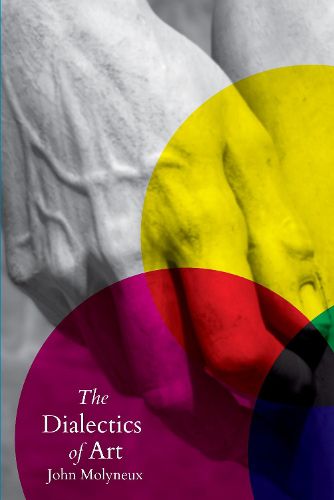Readings Newsletter
Become a Readings Member to make your shopping experience even easier.
Sign in or sign up for free!
You’re not far away from qualifying for FREE standard shipping within Australia
You’ve qualified for FREE standard shipping within Australia
The cart is loading…






In a sweeping survey of art from the dawn of the bourgeois era to the present day, John Molyneux explains what makes artistic production under capitalism unique, moving, and possibly revolutionary.
To the question of ‘what is art’ - it is often simply responded that art is whatever is produced by the artist. For John Molyneux, this clearly circular answer is deeply unsatisfying. In a tour de force spanning renaissance Italy and the Dutch Republic to contemporary leading figures, The Dialectics of Art instead approaches its subject matter as a distinct field of creative human labour that emerges alongside and in opposition to the alienation and commodification brought about by capitalism. The pieces and individuals Molyneux examines - from Michelangelo’s Slaves to Rembrandts Jewish Bride to the vast drip paintings of Jackson Pollock - are presented as embodying the social contradictions of their times, giving art an inherently political relevance.
In its relationship of creative and dialectical tension to prevailing social relationships and norms, such art points beyond the existing order of things, hinting at a potential future society not based on alienated labour in which creative production becomes the property and practice of all.
$9.00 standard shipping within Australia
FREE standard shipping within Australia for orders over $100.00
Express & International shipping calculated at checkout
In a sweeping survey of art from the dawn of the bourgeois era to the present day, John Molyneux explains what makes artistic production under capitalism unique, moving, and possibly revolutionary.
To the question of ‘what is art’ - it is often simply responded that art is whatever is produced by the artist. For John Molyneux, this clearly circular answer is deeply unsatisfying. In a tour de force spanning renaissance Italy and the Dutch Republic to contemporary leading figures, The Dialectics of Art instead approaches its subject matter as a distinct field of creative human labour that emerges alongside and in opposition to the alienation and commodification brought about by capitalism. The pieces and individuals Molyneux examines - from Michelangelo’s Slaves to Rembrandts Jewish Bride to the vast drip paintings of Jackson Pollock - are presented as embodying the social contradictions of their times, giving art an inherently political relevance.
In its relationship of creative and dialectical tension to prevailing social relationships and norms, such art points beyond the existing order of things, hinting at a potential future society not based on alienated labour in which creative production becomes the property and practice of all.